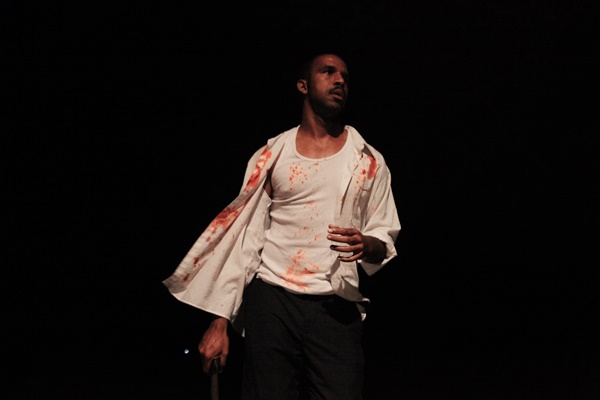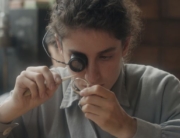At first glance, Cocote looks ambitious in its artistic conception and chaotic in execution. Directed, written, and edited by Nelson Carlo de los Santos Aria, this is a fully fledged auteur-driven film that finds an authentic language, where form and format experimentation intersect to highlight social and cultural issues. Because of its context, this is a strong addition to Dominican cinema, and it would not be surprising if the movie becomes a benchmark for the country’s film industry.
The story is very simple compared with its technical jugglery. Alberto (Vicente Santos), an Evangelical Christian gardener working in the city, comes back home to attend his father’s funeral. His mom is sick, and her sisters Karina (Judith Rodríguez) and Patria (Yuberbi de la Rosa) do not seem happy with his return. His father was brutally beheaded (“cocote” means head) by Martine (Pepe Sierra), a local gangster with power. Alberto’s family wants revenge, but he is unable to kill someone because of his religious beliefs. Martine threatens Alberto and demands that he controls his relatives, otherwise more retaliation will come.
Meanwhile, religious differences cause frictions between Alberto and his family. Alberto preaches the Gospel while the women officiate Santería rituals. For both sides, faith is an essential part of their lives and also the main source of their conflict. In the end, their beliefs are more than answers to spiritual concerns. They are the justification for their behavior.
In Cocote, the two beliefs collide. What the film expresses so well is how violence or terror defines both when confronted with opposition. There is also a striking contrast between the poor population and the house in Santo Domingo, where Albert works. The city with pool parties for the rich have nothing in common with a noisy world dominated by superstition, demonic trances, and foul language. (The Spanish equivalent of the F-bomb in the dialogue triplicates its English counterpart in a Tarantino script). Eventually Alberto can no longer be driven by moral purity. To survive, he has to become corrupted or die.
Cocote could have easily become a revenge tale. Instead, everything within the plot remains in the background (figuratively and sometimes literally). Camera movements focus on objects and places more often than in people. Characters are out the frame frequently. Sounds and dialogues tell the story when the screen is filled with distant images. There is a lot of form experimentation happening, along with the change in aspect ratios and the color/black-and-white transitions. However, sometimes it’s not clear if these tools are purposeful choices or just clever distractions from flaws in the story or budget constraints. Still, the outcome augurs a promising future for the filmmaker.







Leave A Comment